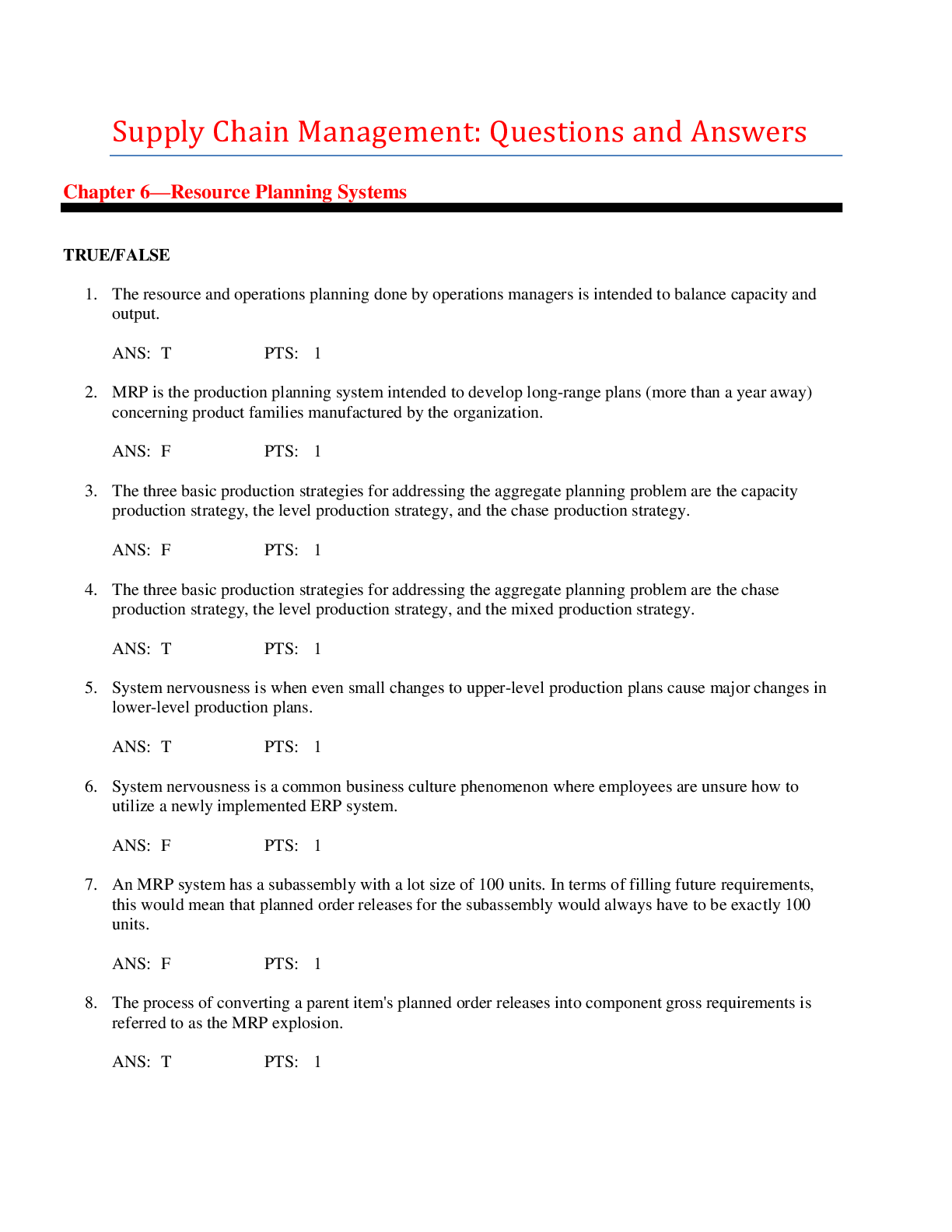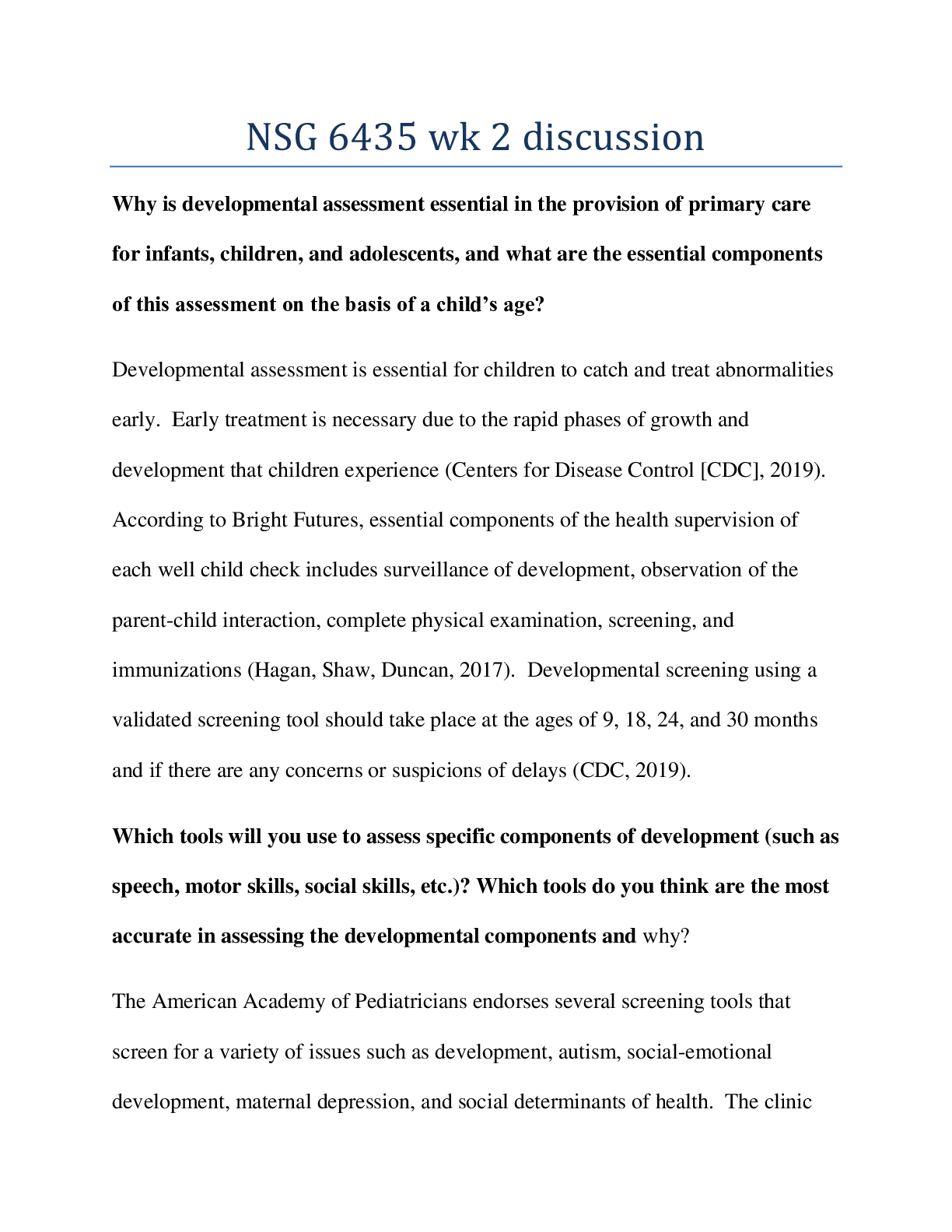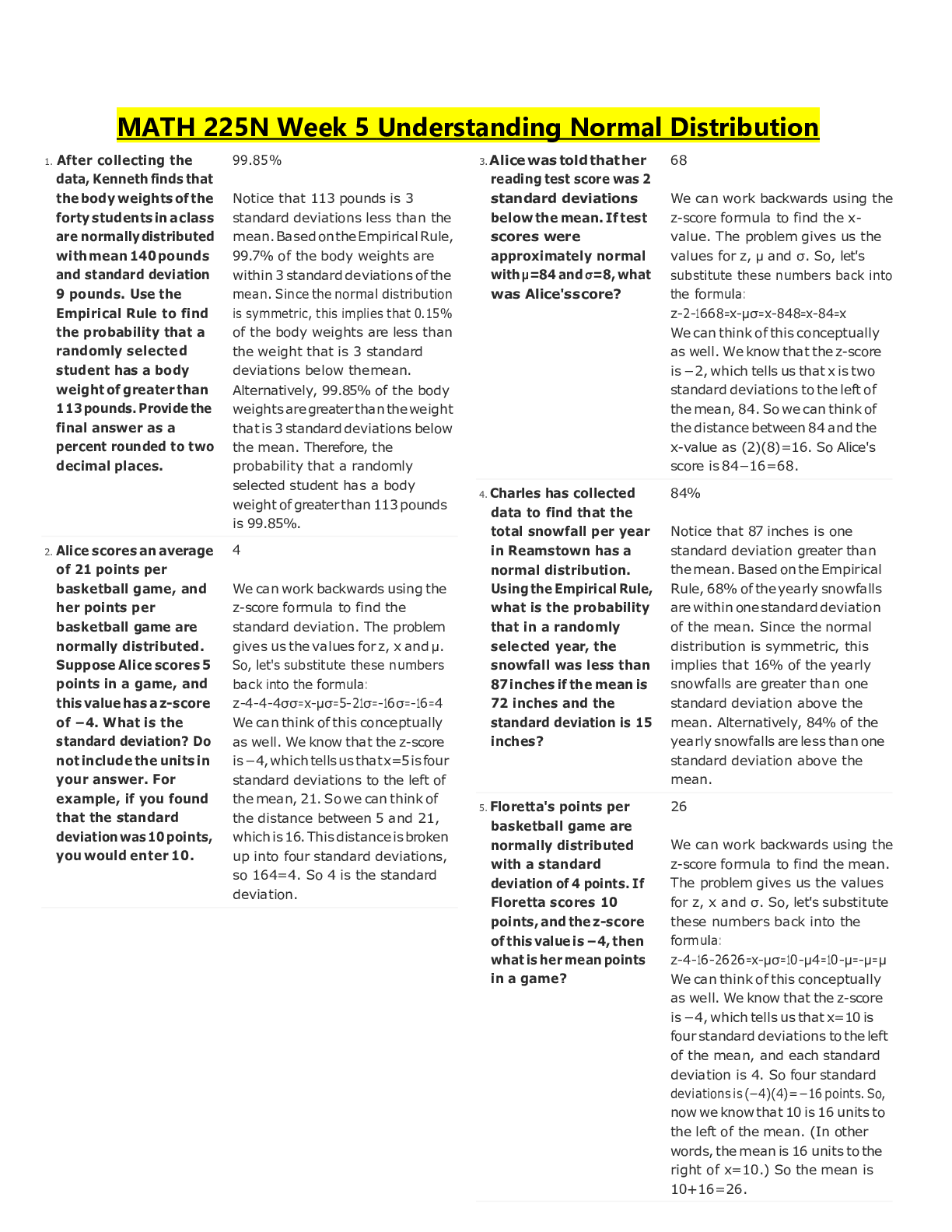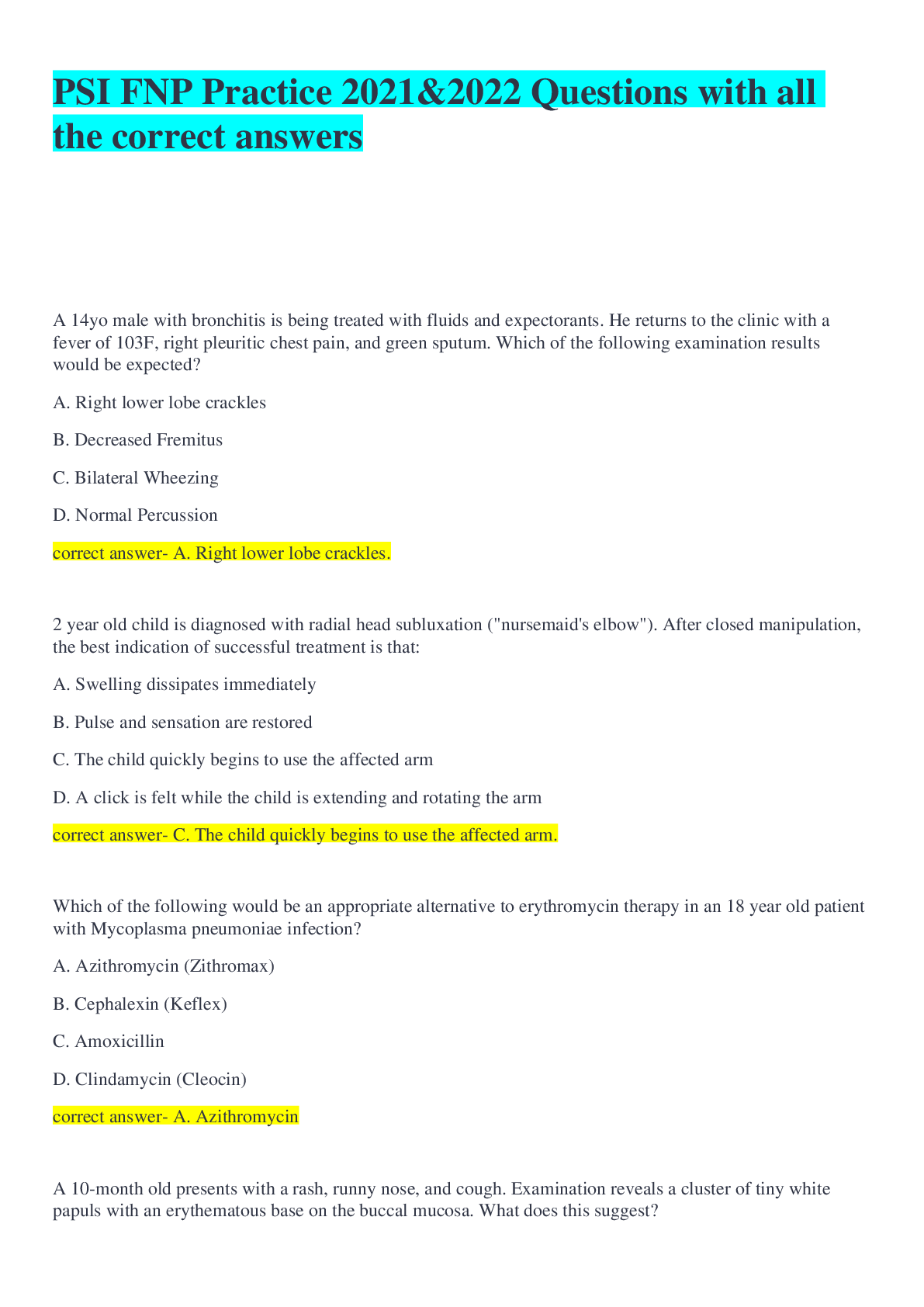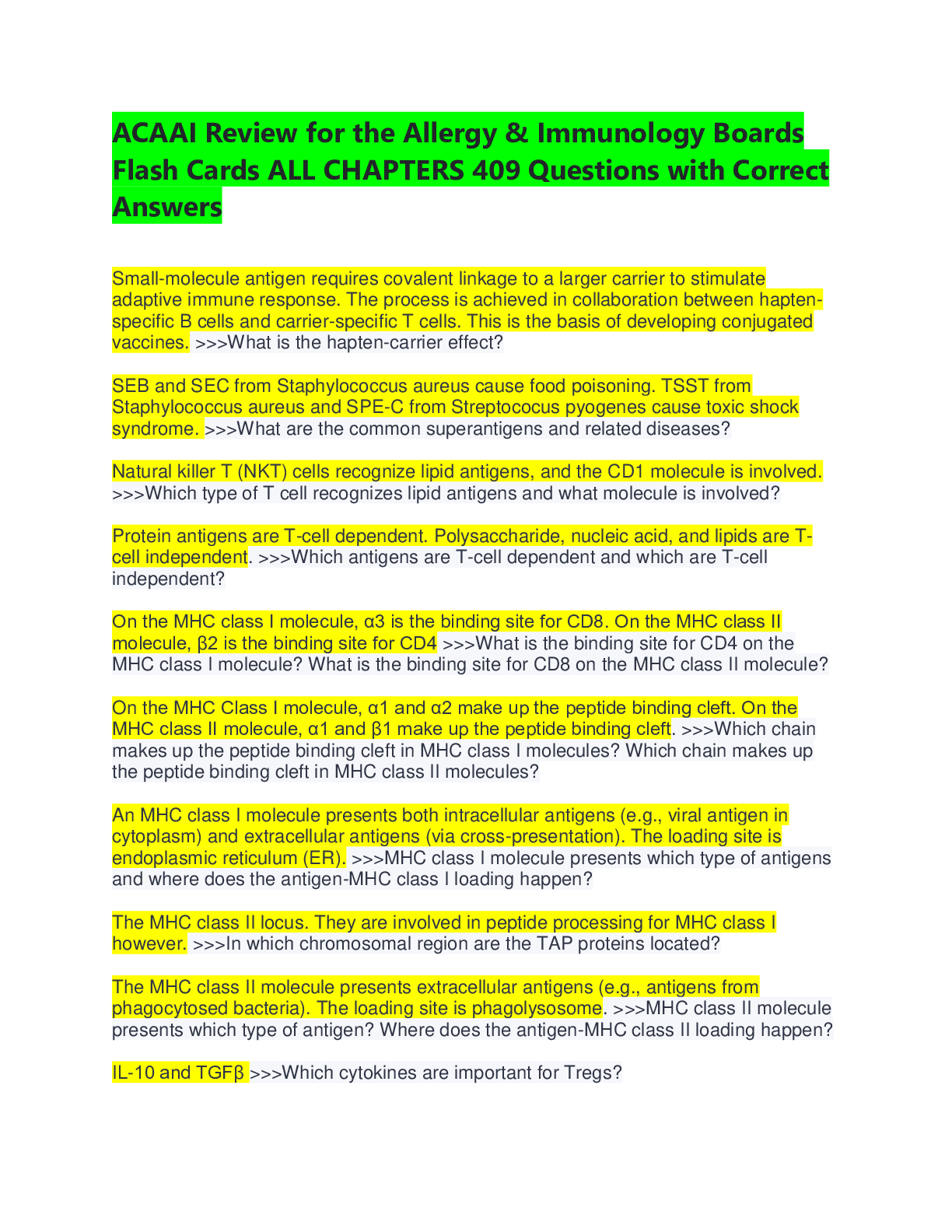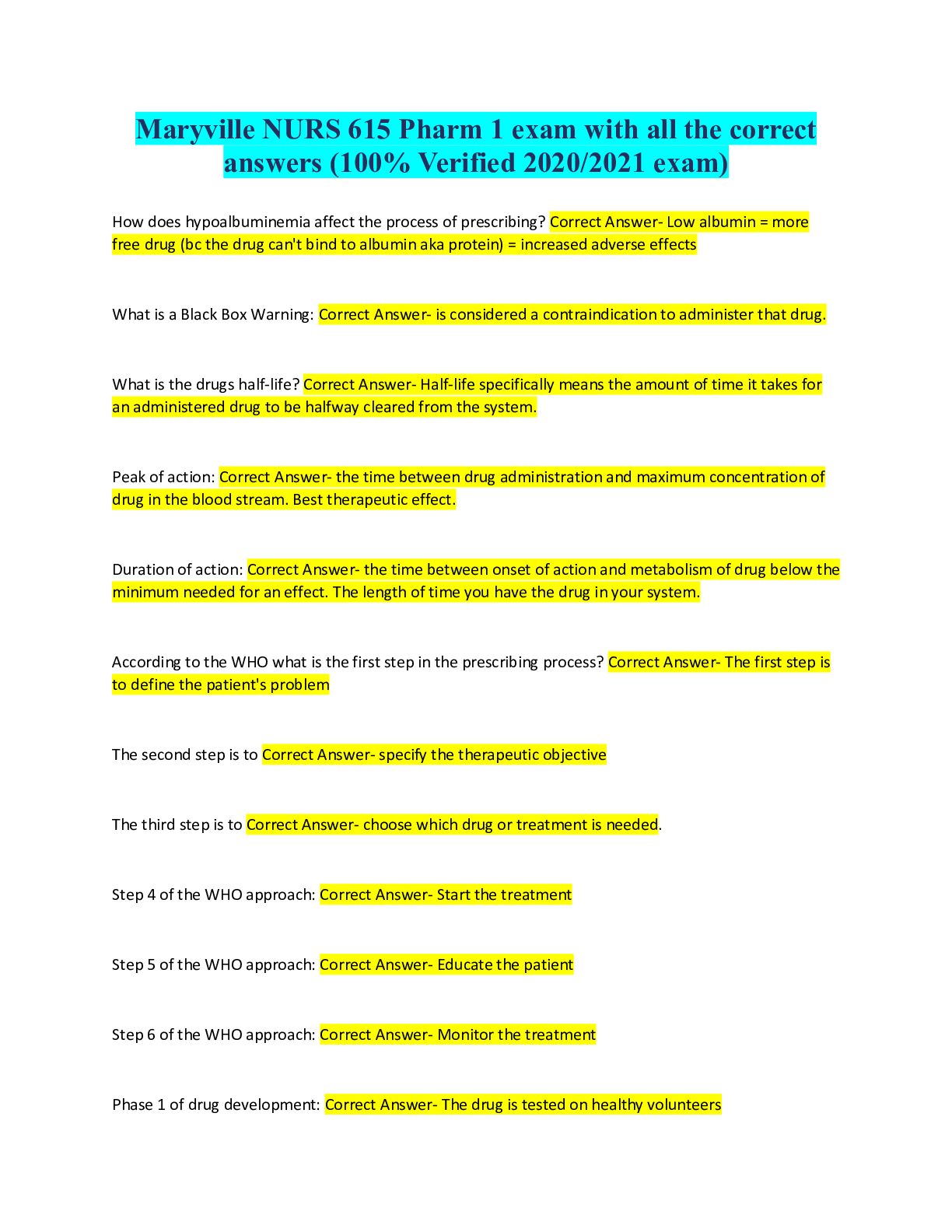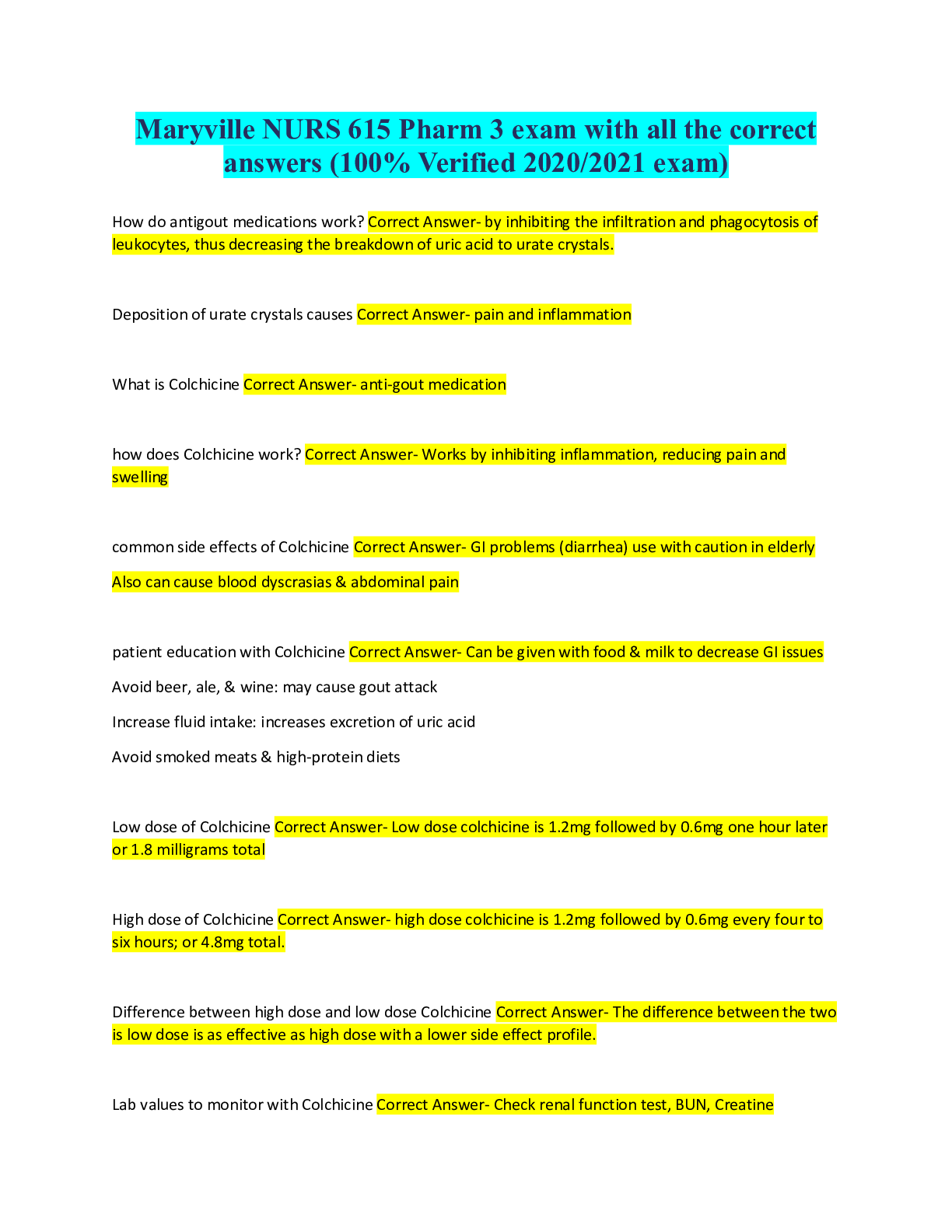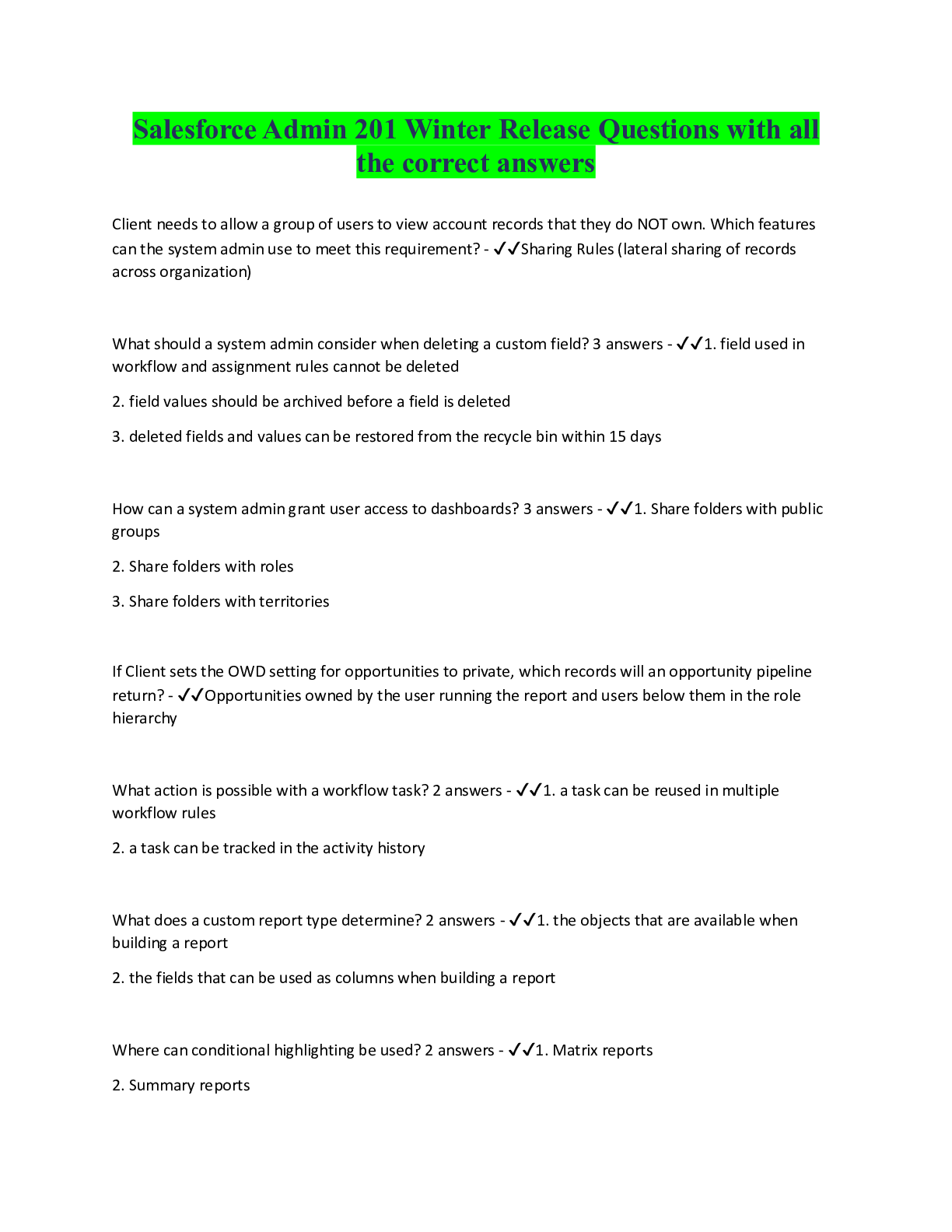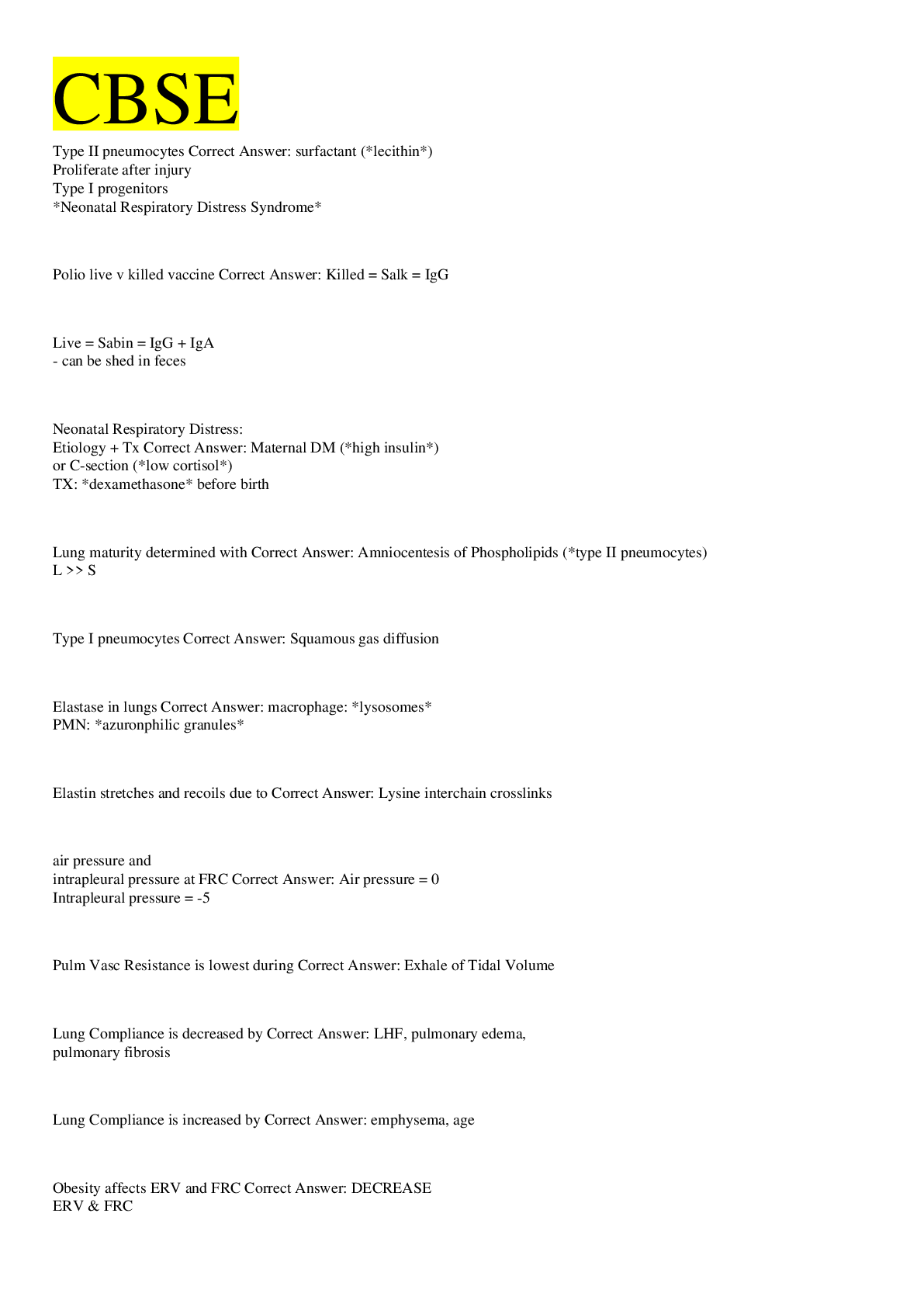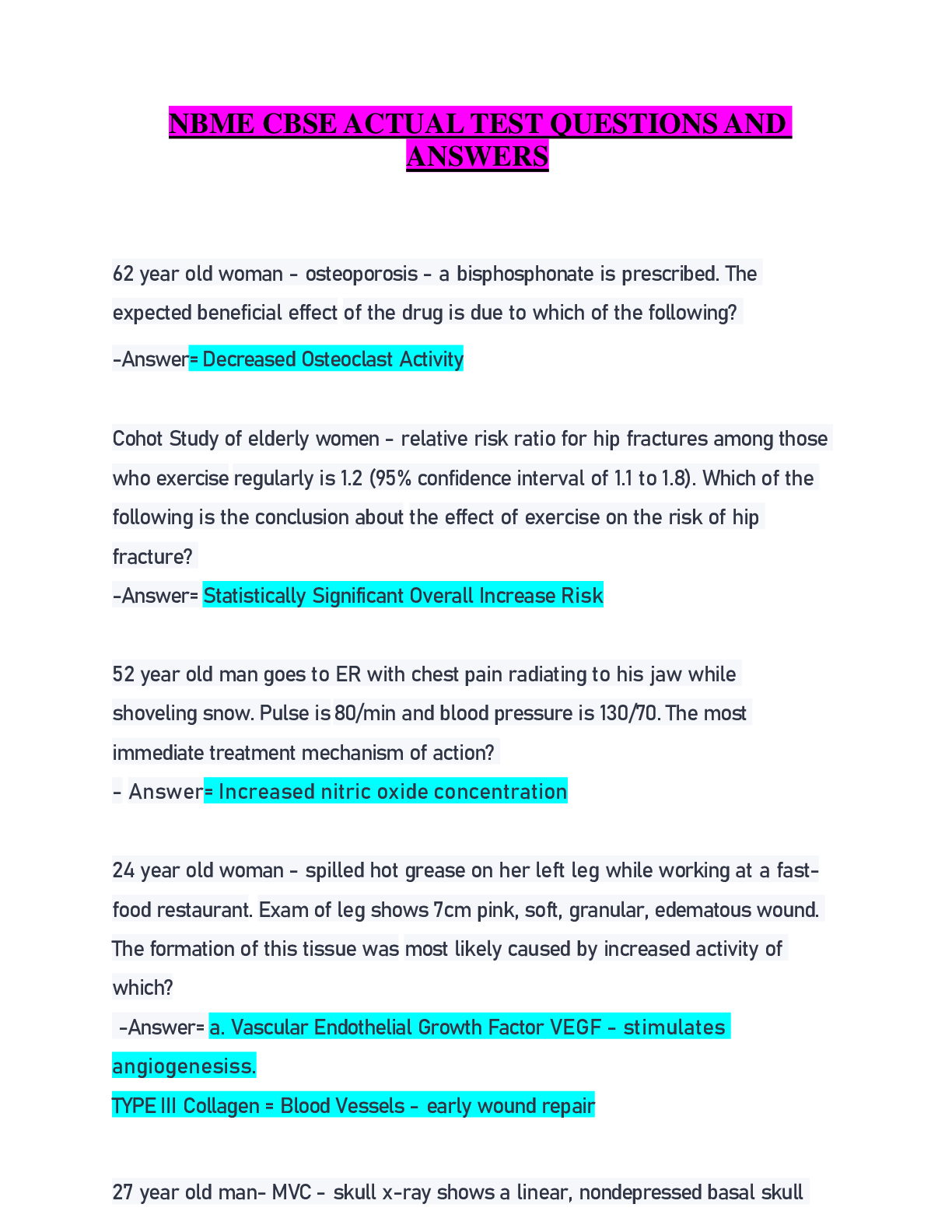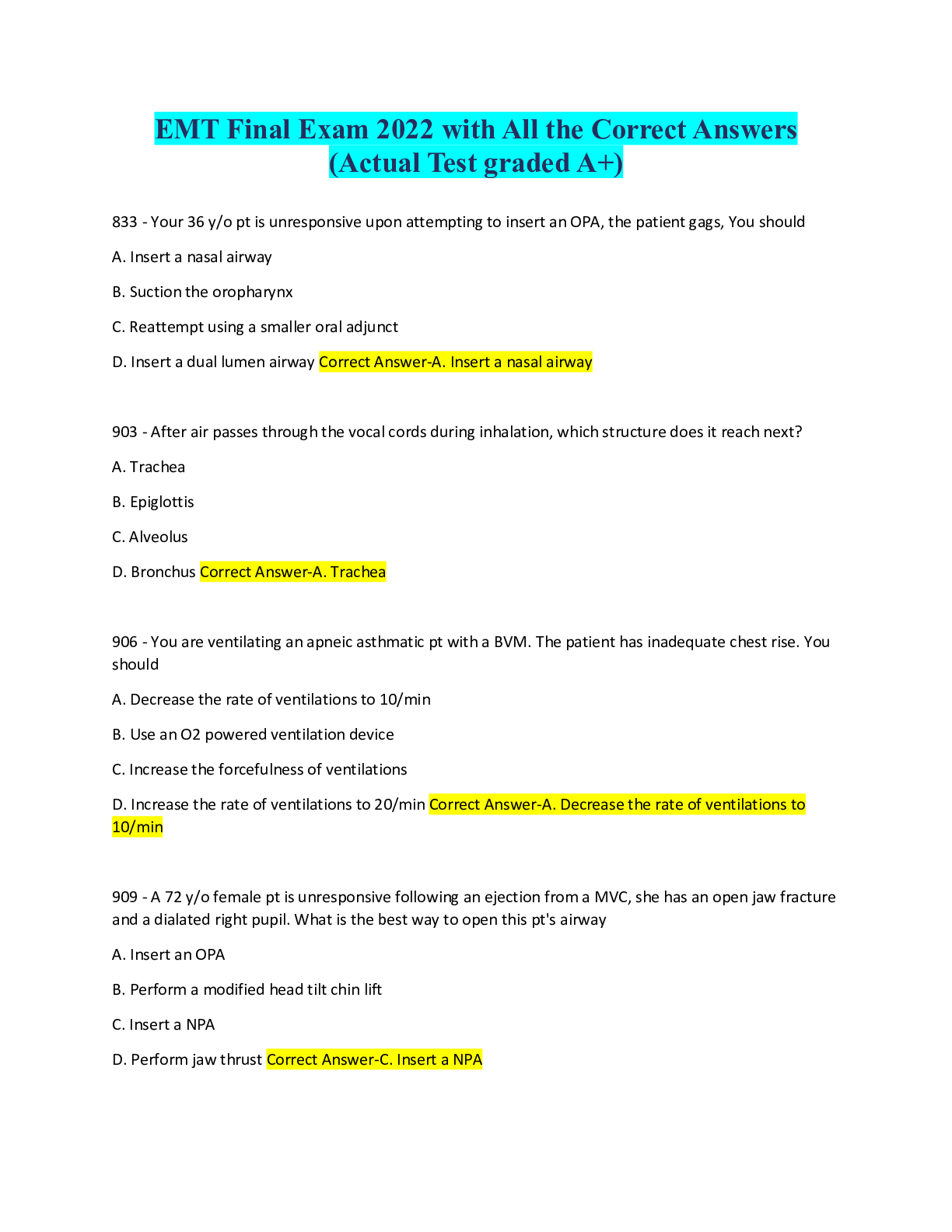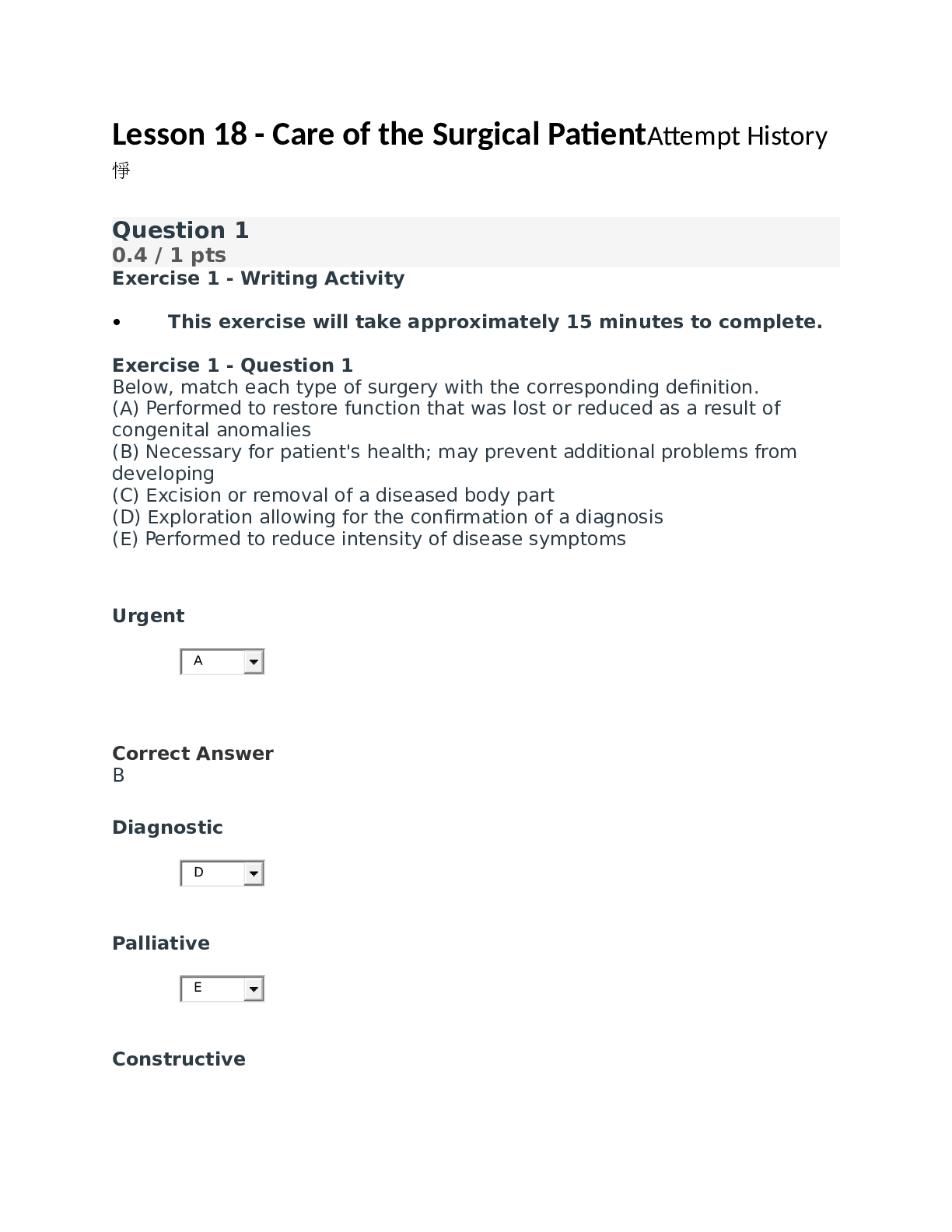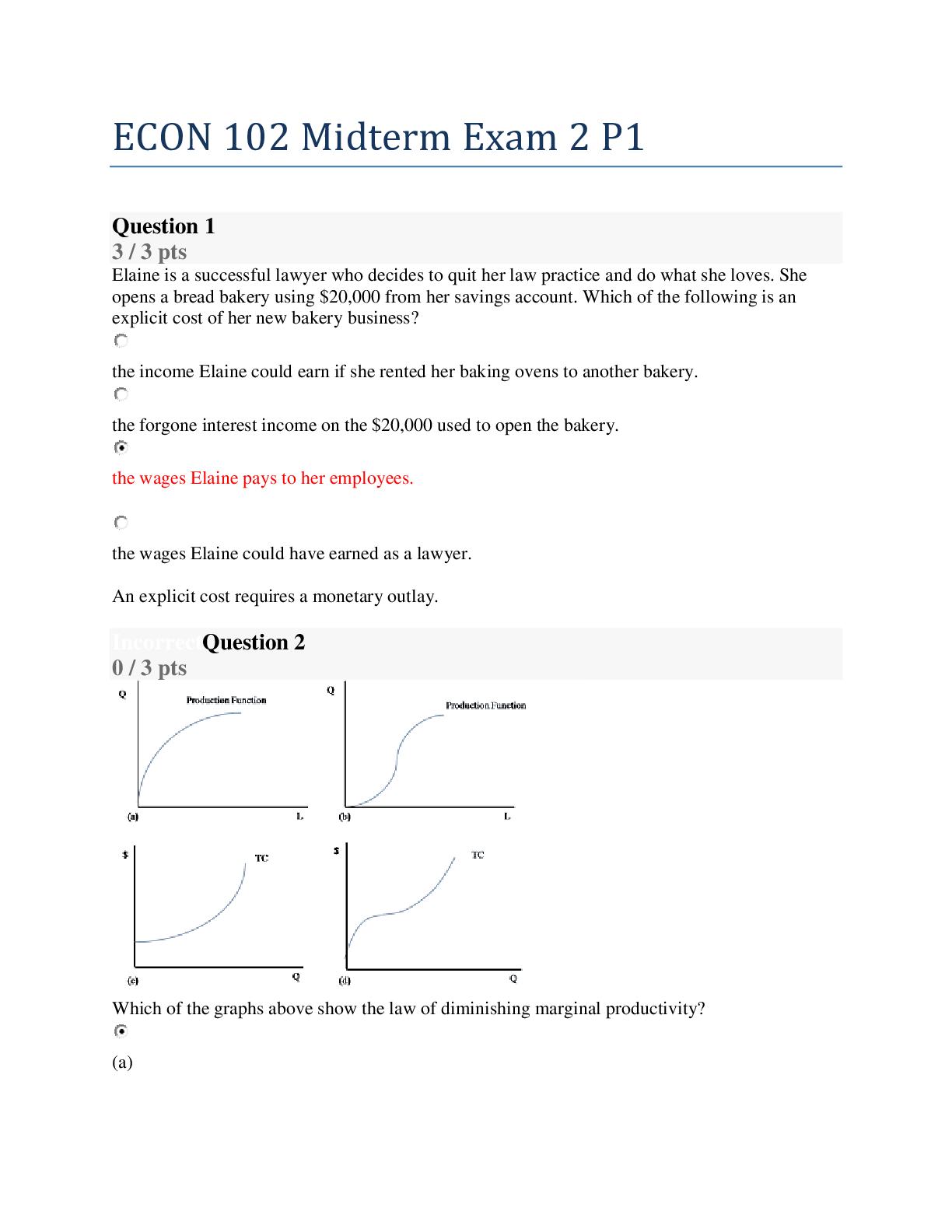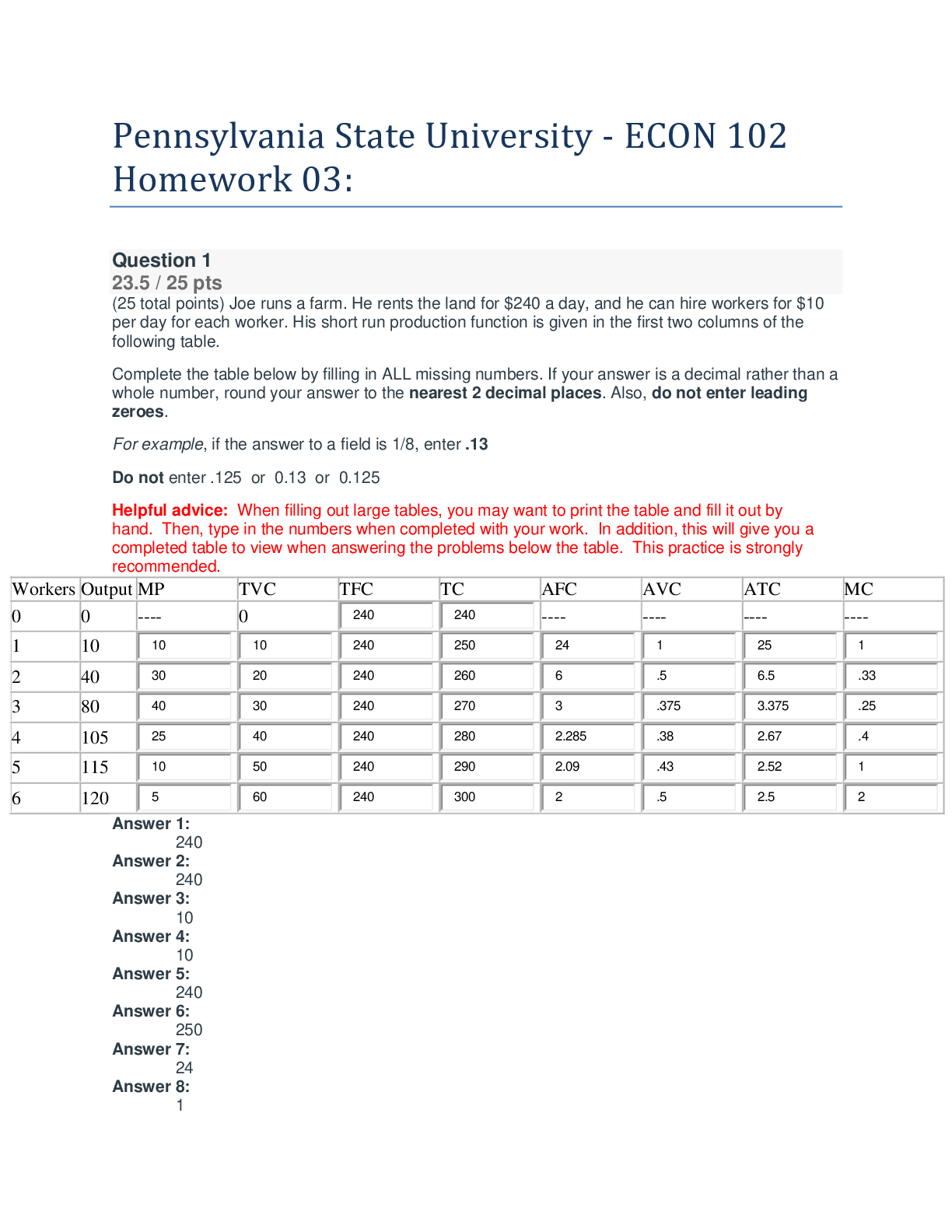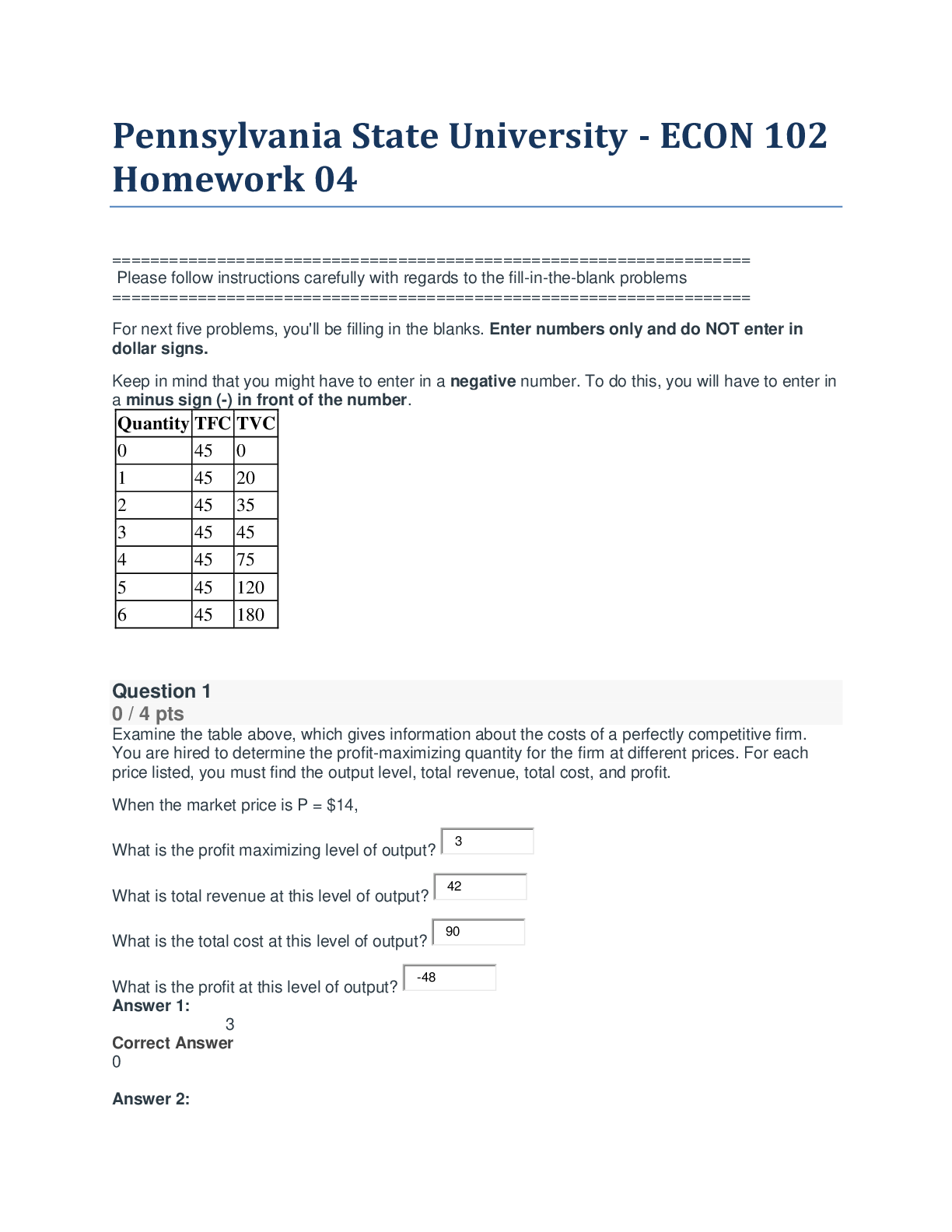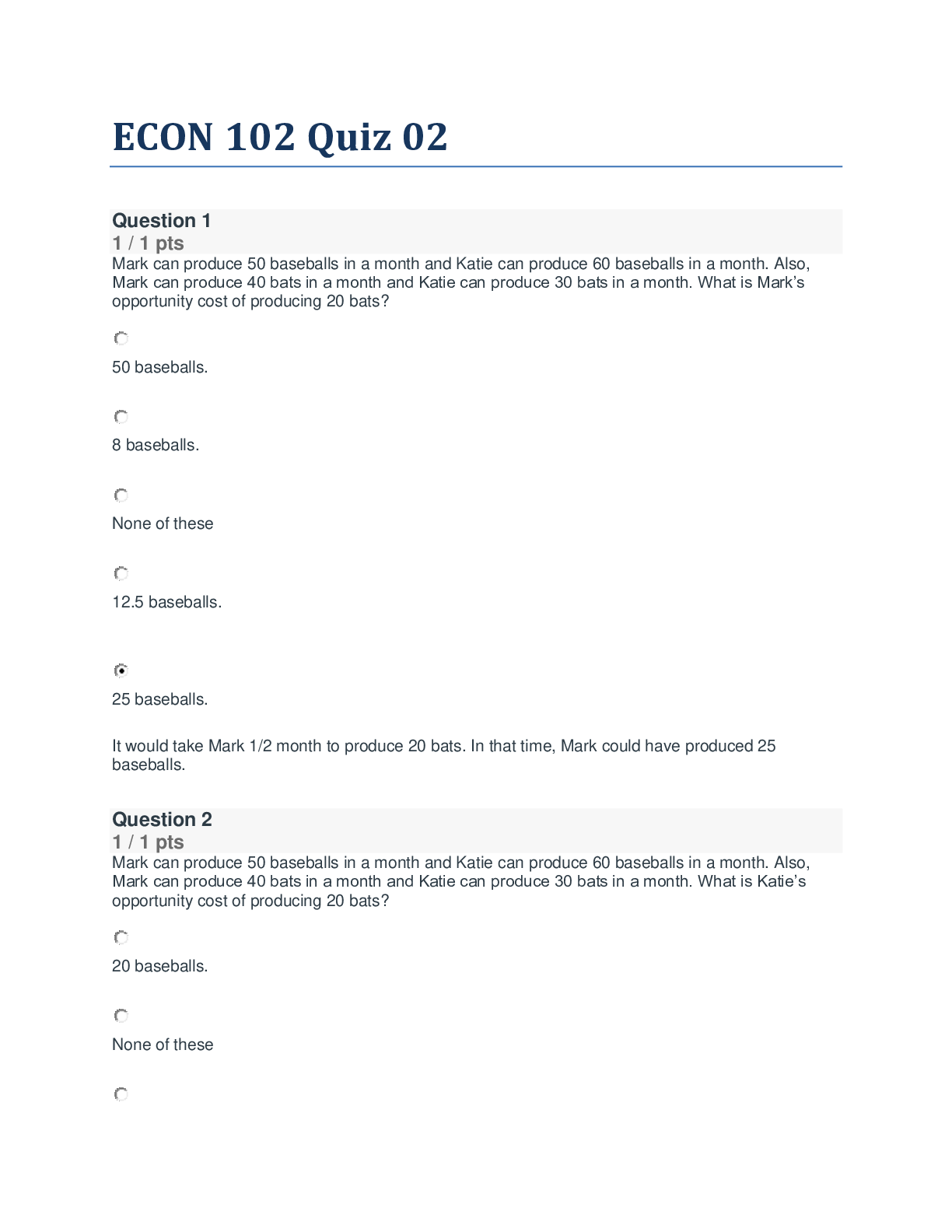Economics > QUESTIONS & ANSWERS > Pennsylvania State University - ECON 102 Homework 05. All the correct Answers Indicated after Review (All)
Pennsylvania State University - ECON 102 Homework 05. All the correct Answers Indicated after Review for the 100% Score.
Document Content and Description Below
ECON 102 Homework 05 Question 1 1 / 21 pts Suppose that a monopolistically competitive firm must build a production facility in order to produce a product. The fixed cost of this facility is FC = ... $24. Also, the firm has constant marginal cost, MC = $3. Demand for the product that the firm produces is given by P = 27-3Q. Fill in the table below. Some numbers have been filled in for you. Hint: All answers that you fill in will be integers (no decimals). Be sure to just type the numbers and do not type in dollar signs. If you enter negative numbers, be sure to include a minus sign (-) to the left of the number. Another Hint: It may be best if you print out the table first and fill it in by hand and then type in your answers. Quantity of Output Price Total Cost Average Total Cost Total Revenue Profits 1 2 3 4 5 7.8 6 7 6.4 8 9 5.7 Question 2 2 / 2 pts Enter just a number to answer this problem. How many units of output will the firm produce if maximizes its profit? Question 3 2 / 2 pts Enter just a number to answer this problem. What price should this firm charge if it wants to maximize its profit? Question 4 2 / 2 pts Monopolistic competition differs from perfect competition primarily because in monopolistic competition, Correct! firms can differentiate their products. entry into the industry is blocked. there are relatively few barriers to entry. Question 5 2 / 2 pts The demand facing a monopolistically competitive firm is ________ a monopoly firm and ________ a perfectly competitive firm. as elastic as; less elastic than less elastic than; more elastic than Correct! more elastic than; less elastic than more elastic than; as elastic as Question 6 2 / 2 pts If firms in a monopolistically competitive industry are earning economic profits, then in the long run these firms can continue earning economic profits because entry into the industry is blocked. Correct! new firms producing close substitutes will enter the industry and this entry will continue until economic profits are eliminated. new firms producing the exact same product will enter the industry and this entry will continue until economic profits are eliminated. the government will most likely regulate firms in this industry to reduce these economic profits. Question 7 2 / 2 pts For a monopolistically competitive firm in long-run equilibrium, the demand curve must intersect the average total cost curve at the ATC curve minimum. the demand curve must be tangent to the average total cost curve at the ATC curve minimum. at the profit-maximizing quantity, the demand curve must intersect the average total cost curve. Correct! at the profit-maximizing quantity, the demand curve must be tangent to the average total cost curve. Question 8 2 / 2 pts We know that monopolistically competitive firms prevent the efficient use of resources because they produce where Question 9 2 / 2 pts When monopolistically competitive firms earn ________ economic profits, other firms ________ an industry in the long run. Correct! positive; enter zero; enter negative; enter zero; exit Question 10 2 / 2 pts Firms will ________ a monopolistically competitive market until ________ are eliminated. enter; losses Correct! enter; profits exit; short run profits exit; long run profits Question 11 2 / 2 pts When MR = MC and P = ATC for a monopolistically competitive firm, the firm is in short‐run disequilibrium. long‐run disequilibrium. Correct! long‐run equilibrium. neither short‐run nor long‐run equilibrium. Question 12 2 / 2 pts Refer to the graph above, which represents the demand and cost curves for Neat and Trim Barber Shop, a monopolistically competitive firm. The profit-maximizing number of haircuts for the Barber Shop is some value less than 20 Question 13 2 / 2 pts Refer to the graph again. The profit-maximizing price of haircuts by Neat and Trim is some price less than $10 Question 14 2 / 2 pts If Neat and Trim maximizes profits, it ________ of $80. receives a total revenue Correct! earns a profit has a total cost suffers a loss Question 15 2 / 2 pts If Neat and Trim maximizes profits, its ________ equals $320. total cost Correct! total revenue profit variable cost average cost marginal cost marginal revenue Question 16 2 / 2 pts If Neat and Trim maximizes profits, its ________ is $240. total revenue Correct! total cost profit marginal revenue average cost marginal cost price Question 17 2 / 2 pts Refer to the graph. From society's point of view, the efficient output level is ______ haircuts. whatever amount of haircuts that occur at the horizontal intercept of the demand function Question 18 2 / 2 pts Refer to the graph again. Suppose that the profits or losses incurred by Neat and Trim are a reflection of the Barber Shop industry as a whole. In the Barber Shop industry, in the long run, firms will continue to earn economic profits. Correct! firms will enter until all firms earn zero economic profit. product demand will become perfectly inelastic the government will impose price controls to eliminate any economic profits. Question 19 2 / 2 pts Suppose that two players are playing the following game. Player A can choose either Top or Bottom, and Player B can choose either Left or Right. The two players choose their strategies simultaneously. The payoffs are given in the table, where the number on the left is the payoff to Player A, and the number on the right is the payoff to Player B. How many possible outcomes are there in this game? Question 20 2 / 2 pts Does Player A have a dominant strategy? If so, what is it? Top is a dominant strategy for Player A Bottom is a dominant strategy for Player A Left is a dominant strategy for Player A Right is a dominant strategy for Player A Correct! There is no dominant strategy for Player A Question 21 0 / 2 pts Does Player B have a dominant strategy? If so, what is it? Top is a dominant strategy for Player B Bottom is a dominant strategy for Player B Left is a dominant strategy for Player B You Answered Right is a dominant strategy for Player B Correct Answer There is no dominant strategy for Player B Question 22 2 / 2 pts The following four questions are True/False. The strategy combination of Player A choosing Top and Player B choosing Left is a Nash Equilibrium. Correct! True False Question 23 2 / 2 pts The strategy combination of Player A choosing Top and Player B choosing Right is a Nash Equilibrium. True Correct! False Question 24 2 / 2 pts The strategy combination of Player A choosing Bottom and Player B choosing Left is a Nash Equilibrium. True Correct! False Question 25 2 / 2 pts The strategy combination of Player A choosing Bottom and Player B choosing Right is a Nash Equilibrium. Correct! True False Question 26 0 / 2 pts What is the maximin strategy for Player A? Correct Answer Top You Answered Bottom Left Right There is no maximin strategy for Player A Question 27 2 / 2 pts What is the maximin strategy for Player B? Top Bottom Left Correct! Right There is no maximin strategy for Player B Question 28 0 / 2 pts Now suppose the same game is played with the exception that Player A moves first and Player B moves second. Using the backward induction method discussed in the online class notes, what will be the outcome of the game? Hint: Draw the game tree associated with this situation. Player A chooses Top and Player B chooses Left Player A chooses Top and Player B chooses Right You Answered Player A chooses Bottom and Player B chooses Left Correct Answer Player A chooses Bottom and Player B chooses Right Question 29 3 / 3 pts The table shows an industry with 12 firms and the market share (percentage) owned by each firm. Enter a number only. Do NOT put in dollar signs, commas, decimals or units. Calculate the HHI for this industry. Answer 1: Correct!1042 Question 30 3 / 3 pts If firms F and G decide to merge, what would the new HHI be? Answer 1: Correct!1138 Question 31 3 / 3 pts If firms C and D decide to merge, what would the new HHI be? (don’t assume that firms F and G have merged from the previous question). The new HHI after firms C and D merge is Answer 1: Correct!1330 Question 32 3 / 3 pts If firms C and D decide to merge. This merger would be ________ by the FTC because _______. challenged, the post merger HHI > 1800 Correct! challenged, the merger would increase HHI by more than 100 unchallenged, the post merger HHI unchallenged, there are still 11 other firms keeping the industry competitive Question 33 3 / 3 pts Which of the following is true about antitrust law? The “Rule of Reason” strengthened the Sherman Act Antitrust legislation is generally aimed at making markets more concentrated with a smaller number of firms Antitrust legislation doesn’t have as many important applications today, and this is emphasized by the fact that the Clayton Act was passed more than 100 years ago All actions that reduce competition are deemed illegal according to antitrust law Correct! The Clayton act makes specific rules about economic actions being illegal if they result in a greatly reduced amount of competition Question 34 0 / 2 pts The four largest firms account for approximately 90% of U.S. beer sales. The U.S. beer industry would be best classified as a(n) perfectly competitive industry. You Answered monopolistically competitive industry. Correct Answer oligopoly. monopoly. Question 35 0 / 2 pts Of the following, ________ is the best example of an oligopolistic industry. grocery stores Correct Answer automobiles production You Answered electric power soybean farming Question 36 2 / 2 pts Oligopolists must ________ to their strategy in order to determine their optimal strategy. anticipate the reaction of their customers anticipate the reaction of their rivals Correct! both A and B are correct. none of the above Question 37 0 / 2 pts The ________ is the share of industry output in sales or employment accounted for by the top firms in an industry. Correct Answer concentration ratio contestability ratio competitive index collusive level You Answered HHI Question 38 0 / 2 pts The major distinguishing characteristic of oligopoly is that firms produce differentiated products. You Answered firms can influence the price of their product. entry into the industry easy. Correct Answer firms are interdependent. [Show More]
Last updated: 1 year ago
Preview 1 out of 23 pages
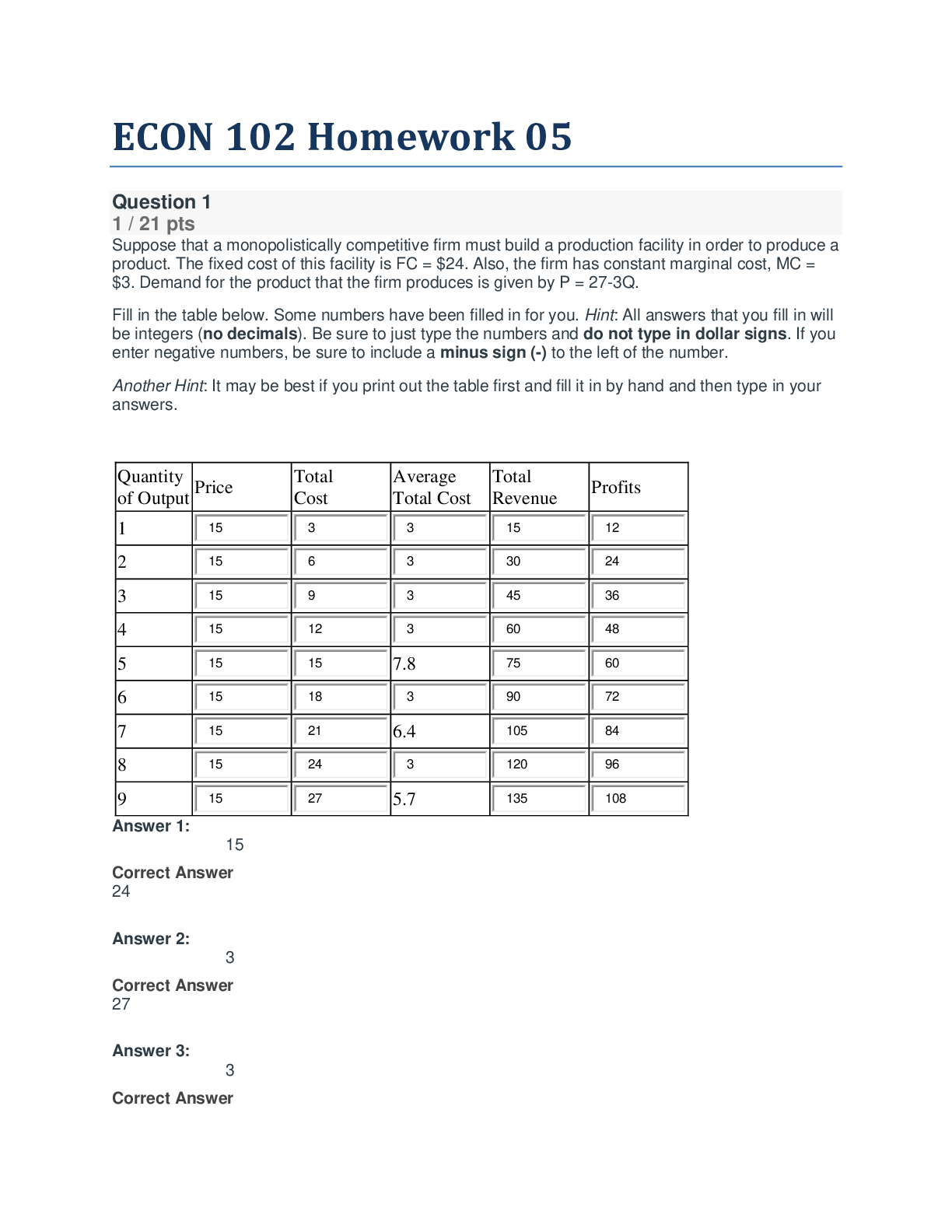
Reviews( 0 )
Document information
Connected school, study & course
About the document
Uploaded On
Oct 04, 2020
Number of pages
23
Written in
Additional information
This document has been written for:
Uploaded
Oct 04, 2020
Downloads
0
Views
35





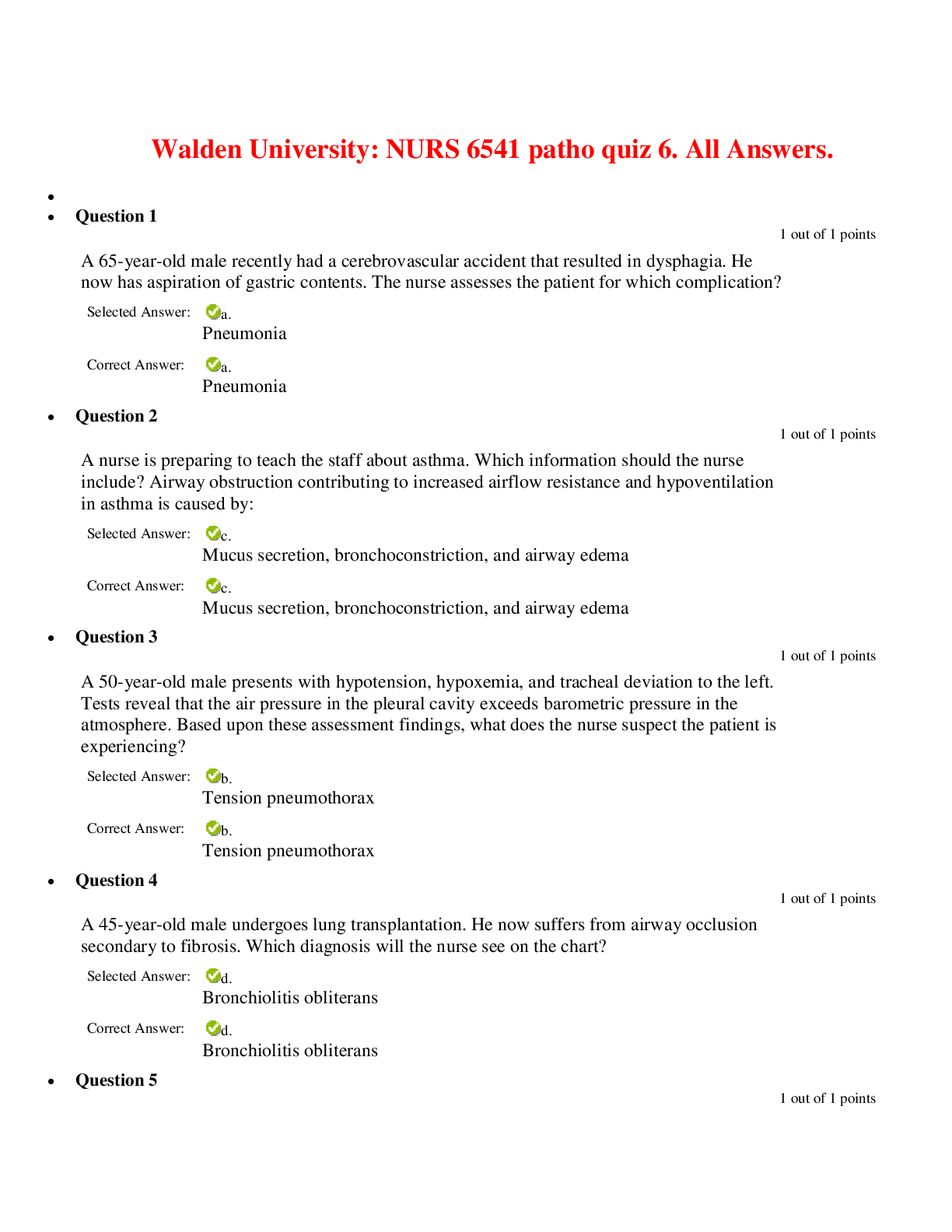





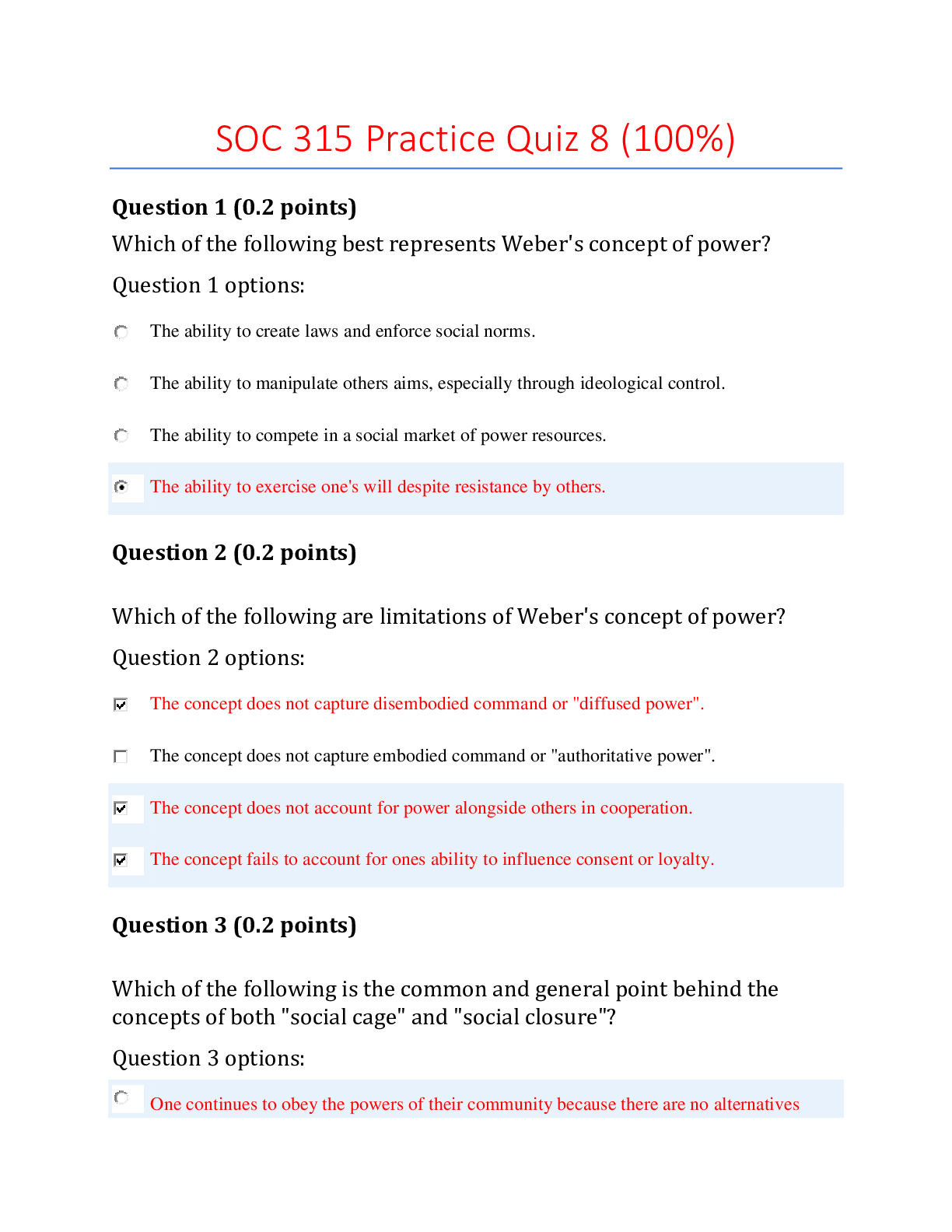
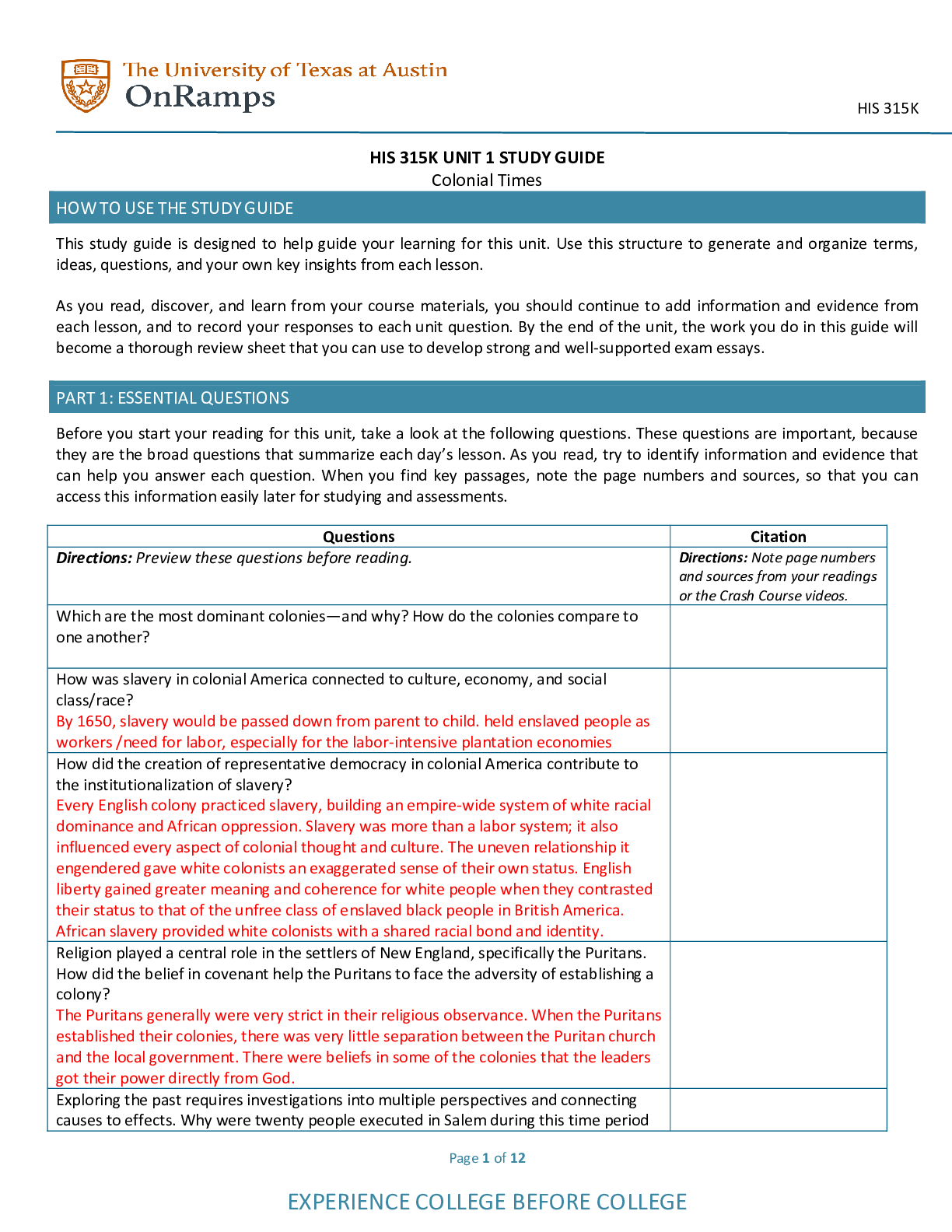
.png)

